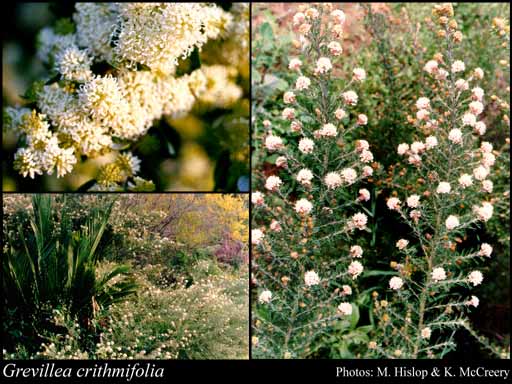- Reference
- Prodr. Suppl. 23 (1830)
- Conservation Code
- Not threatened
- Naturalised Status
- Native to Western Australia
- Name Status
- Current
Dense much-branched shrub, (0.3-)0.6-2 m high. Fl. white/white-pink, Jun or Aug to Nov. White or yellow sand over limestone. Dunes, hillslopes, sandplains.

Scientific Description
Shrubs, 0.6-2.5 m high; branchlets hairy, not glaucous. Leaves alternate, 12-30 mm long, hairy, on the abaxial surface, the hairs straight; lamina flat, once divided, tripartitely divided, divided to the midrib; lobes 10-20 mm long, 1-1.2 mm wide, the margins revolute, exposing the lower surface of the leaf blade, forming a groove either side of the midvein. Inflorescences terminal, white, cream or pink; pedicels 6-9 mm long. Perianth 3-5 mm long; tepals all free after flower opens, glabrous; ovary glabrous, stipitate, the stipe 1.5-2 mm long; pistil 4-5 mm long, white or pink, pollen presenter conical, style glabrous. Follicles glabrous, not viscid, dehiscent, 12-15 mm long. Flowers in June, July, August, September or December. Occurs in the South-west (SW) Botanical Province(s), in the Geraldton Sandplains (GS) or Swan Coastal Plain (SWA) IBRA subregion(s).
Distribution
- IBRA Regions
- Swan Coastal Plain.
- IBRA Subregions
- Perth.
- IMCRA Regions
- Leeuwin-Naturaliste.
- Local Government Areas (LGAs)
- Cambridge, Claremont, Cottesloe, Dandaragan, Fremantle, Gingin, Joondalup, Mandurah, Mosman Park, Murray, Nedlands, Perth, Rockingham, Stirling, Waroona.